The militarization of space is the next step for the United States. SpaceX and lasers in orbit
The United States took the first step, unilaterally rejecting the Treaty on the Limitation of Anti-Ballistic Missile Systems (ABM) in 2001, justifying it with a missile threat from Iran and North Korea. True, by a strange coincidence, most of the missile defense elements are deployed in such a way as to ensure the effective interception of Russian strategic missiles.
Despite the statements by the United States that the missile defense system they deployed is unable to withstand the massive strike of Russian ballistic missiles, we must not forget that in the case of the first sudden strike by the United States, the alignment of forces may change, and in this case the role of strategic missile defense cannot be overestimated. Who knows, do not start Russia updating its strategic nuclear forces and missile attack warning systems, to which all this would lead ...
The next victim was the Treaty on Conventional Armed Forces in Europe (CFE), and this time the initiator was the Russian Federation. Despite the fact that formally the Russian Federation remains a party to the agreement, its execution has been suspended since 2007. The formal reason was the accession to the NATO bloc of new members to whom the CFE Treaty does not apply, and whose entry has allowed an increase in the number of NATO forces in Europe.
And finally, last, at the beginning of 2019, the Treaty on the Elimination of Intermediate-Range and Shorter-Range Missiles (SPLM) fell, the initiator of which was again the United States. As an excuse for the release, the 9М729 rocket existing in Russia was selected with characteristics that supposedly went beyond the scope stipulated in the INF. Along the way, China was dragged by the ears, which had nothing to do with the INF. It seems like their medium-range missiles threaten Russia, therefore, she herself is interested in the new DISMD, including as a member of the PRC.
In fact, the US withdrawal from the INF Treaty can and should be considered in conjunction with the withdrawal from the Treaty on the Limitation of Anti-Ballistic Missile Defense Systems. By deploying medium-range and shorter-range missiles in Europe, especially on the territory of the new members of NATO, one can gain significant advantages in delivering the first disarming strike, in which the US strategic missile defense system plays its role. Russia did not receive such advantages when leaving the INF Treaty. Yes, in the event of a conflict, we will destroy the missile defense and nuclear weapon in the USA in Europe, but it will be late, “the birds will fly away”. The United States itself is indifferent to what will be left as a result of Europe, if at the same time they can neutralize the Russian Federation, the main thing is that as few as possible warheads can reach them.
There is another international treaty - the Treaty of Space. Among the principles, the ban for the States parties to deploy nuclear weapons or any other weapons of mass destruction in Earth’s orbit, placing them on the Moon or any other celestial body, or at a station in outer space, restricts the use of the Moon and other celestial bodies only to peaceful purposes and directly prohibits their use for testing any kind of weapon, conducting military maneuvers or creating military bases, structures and fortifications.
Despite the fact that the Outer Space Treaty does not prohibit the deployment of conventional weapons in orbit, in fact no country has so far deployed weapons in outer space capable of delivering strikes from outer space on the Earth’s surface. Can we assume that this was due to the goodwill of the superpowers? It is unlikely, rather, it was due to the fact that the deployment of strike weapons in orbit could upset the balance of forces and lead to a sudden and unpredictable development of the conflict, and the roughly equal opportunities of superpowers in space exploration guaranteed the rapid emergence of similar weapons systems from a potential enemy.
Based on this, it can be argued that in the event that one of the parties gets an advantage in deploying weapons in space, it will definitely take advantage of them.
At the moment there are three powers capable of creating and deploying weapons in outer space - the United States, Russia, and the People's Republic of China (the rest is much less able).
China is actively developing its space technology, but it is still necessary to recognize that at the moment it is significantly inferior to both the United States and Russia. On the other hand, with the existing course, the capabilities of China in space in the near future may increase substantially.
Thanks to the ongoing corruption, the lack of clearly defined goals and the loss of production of many critical components, Russia is gradually losing its position as one of the leading space powers. Numerous incidents with both carriers and payloads (payloads) lead to an increase in launch costs, a key commercial advantage of the national space program. Most of the launches are made on carriers developed during the USSR, and new carriers such as the Angara launch vehicle (PH) are often criticized because of the high development and production costs, as well as the use of dubious technical solutions.
New hopes of the Russian cosmonautics are associated with the active development of the Soyuz-5 rocket launcher, the Yenisei super-heavy rocket launcher, and the Federation, a promising reusable manned spacecraft (KK). How these hopes are justified, time will tell.
The US space industry has recently received rapid development. This was achieved by attracting private companies, whose ambitions and approach to work made it possible in the short term to create carrier rockets that significantly moved the Russian Federation on the space transportation market.
First of all, this refers to SpaceX, repeatedly discussed and criticized. The initial message “they won't succeed”, numerous analytical articles about what SpaceX is doing wrong and what SpaceX has stolen from the Soviet / Russian cosmonautics, were replaced by questions to Roscosmos: “Why doesn’t we have this?” Russia has a large part of the space transportation market, and perhaps in the near future will slaughter the last “cash cow” of Roscosmos - the delivery of Americans to the ISS.
Also, SpaceX already has the Falcon Heavy launch vehicle with the payload capacity of 63,8 tons in a low reference orbit (LEO) in the world at the moment.
But the most ambitious and interesting development of SpaceX is a super-heavy reusable BFR rocket with the Starship (Star Ship) spacecraft. It should be a fully reusable two-stage system with engines on methane, with the ability to output 100-150 tons of payload to NOU. The founder of SpaceX, Ilon Musk, expects that the cost of putting the load into orbit at BFR / Starship will be comparable to that of SpaceX main workhorse of the Falcon-9 rocket.
Successes of SpaceX push other players of the American space market. Blue Origin, the richest man in the world, Jeff Bezos, is developing his own new Glenn heavy rocket project on BE-4 methane engines with a load of NOU in 45 tons. By the way, the BE-4 engines should replace the Russian RD-180 engines on the promising American PH Vulcan, the successor of the Atlas-5 launch vehicle, which is currently equipped with the RD-180. Blue Origin lags behind SpaceX, but in general, work is being done successfully, and cooperation with the ULA (United Launch Alliance) - a joint venture owned by major contractors of the US Department of Defense, Boeing and Lockheed Martin, is a guarantee that at least methane engines BE -4 will be brought for mass production.
Finally, another important player is the Boeing company with its SLS (Space Launch System) super-heavy rocket, 95 carrying capacity - 130 tons per NOU. This super heavy rocket, the engines of all stages of which run on liquid hydrogen, is being developed by order of NASA. The SLS program has repeatedly become the target of criticism because of the enormous cost, however, NASA stubbornly clings to this program, which will ensure that NASA is independent from SpaceX-type private contractors in mission critical situations.
Thus, in the near future, the United States will receive a significant amount of PH on promising methane and hydrogen fuel. Disruption of one or several programs will not leave the USA without promising RN, but will only give additional impetus to the development of competing projects. In turn, competition in the space cargo market will lead to a further reduction in the cost of placing a payload into orbit.
This advantage may spur the US Department of Defense to actively militarize outer space. US President Donald Trump 20 February 2019 of the year signed a memorandum on the establishment of the US Space Forces. Among the goals of the Space Forces are the protection of US interests in space, "repelling aggression and defending the country", as well as "projecting military force in space, from space and into space."
At the moment, the military use of space is limited to providing intelligence, communications and navigation to the traditional types of armed forces, which in itself is an extremely important task, since this repeatedly “catalyzes” their capabilities.
One of the most secret projects of the US armed forces are flights of an unmanned spacecraft Boeing X-37. According to open data, this spacecraft (SC) is designed to operate at altitudes from 200 — 750 km, and is able to quickly change orbits, maneuver, perform reconnaissance tasks, deliver to space and return the payload. The launch of the Boeing X-37 spacecraft into orbit can be carried out by the Atlas-5 and Falcon 9.
The exact goals and objectives of X-37 are not disclosed. It is assumed that it serves, among other things, to develop technologies for intercepting enemy space vehicles.
The basis for the rapid growth of the private space industry in the United States are promising projects for the deployment of low-orbit satellite networks that provide global access to the Internet. There are several competing projects that require several thousand to several tens of thousands of satellites to be deployed to orbit, which in turn creates the need for promising RNs.
There is no doubt that the low-orbit networks will be used by the armed forces of the countries whose companies are implementing these projects. Low-orbit Internet connection satellites will reduce and reduce the cost of both terminals and access costs, and increase the speed and throughput of communication channels. As a result, a large number of unmanned and remote-controlled vehicles for various purposes may appear.
The low cost of delivering payloads to orbit, and the presence of heavy and extra heavy-class rocket launchers, can make American generals wipe off dust from old developments to militarize space.
First of all, it concerns the missile defense system. Placing in orbit not only satellites capable of tracking the launch of strategic missiles and targeting ground-based interceptor missiles, but also combat platforms with missile or laser weapons, can significantly enhance the capabilities of the missile defense system due to the impact of both the combat units and the missile itself. , in the initial phase of flight (until the moment of dilution of warheads). For those who doubt the capabilities of laser weapons, we can recall the YAL-1 project, designed to hit ballistic missiles at the initial phase of flight using a laser, with a power of the order of one megawatt, placed on a Boeing 747-400F aircraft. As a result of the tests, the principal possibility of such interception was confirmed. The defeat of the target was envisaged at a distance of 400 km. The closure of the program is most likely due to the ineffective type of laser used — chemical reagents. Modern technologies quite allow you to create laser weapons with power up to megawatts based on fiber-optic or solid-state lasers.
The density of the atmosphere overcome by a laser beam when working from space will be significantly lower. Based on this, a spacecraft capable of changing the orbit height, with a high-energy laser on board, will pose a serious threat to existing and future ballistic missiles.

The president and chief operating officer of SpaceX Gwinn Shotwell during the annual press conference of the United States Air Force announced that the company is ready to participate in the deployment of weapons in space to protect the United States.
It is noted that at the moment in the United States are working on the idea of creating orbital weapons of directed energy, to detect and destroy missiles from Russia, China and North Korea. According to the former head of NASA and current US Deputy Secretary of Defense for Technical Affairs Michael Griffin, America plans to create a “touch shield” in space by 2023 to counteract the hypersonic missile systems of Russia and China.
Another direction in the militarization of space could be the creation of a space-to-surface weapon. Projects of such weapons were worked out in the USA within the framework of the program “Rods from God”.
As part of this program, massive tungsten rods with a length of about 5-10 meters and a diameter of 30 centimeters were supposed to be placed on special satellites. When flying around the target, the satellite drops the rod and makes adjustments to its flight until the target is hit. The target is hit by the kinetic energy of a tungsten rod moving at a speed of the order of 12 kilometers per second. Shy away from such a blow or oppose it is almost impossible.
Another type of warhead was developed as part of the Prompt Global Strike program. In the warhead of a ballistic missile was supposed to load several thousand small-sized tungsten damaging elements. At a certain height above the target, the warhead must be undermined, after which the target will cover a shower of tungsten pins that can destroy all manpower and equipment in an area of several square kilometers. This technology can be adapted for use from space.

How realistic are these projects? With the current level of technology, they are quite realizable. Reducing the cost of launching a PN into orbit will allow developers to actively conduct testing of promising types of weapons, bringing them to working condition.
The militarization of space by the leading powers will create an arms race that many countries will never be able to master. This will divide the world and the powers of the first rank and all the others who are not capable of space weapons. The threshold for entering this technological level is significantly higher than for creating airplanes, ships or armored vehicles.
The ability to strike from space will significantly affect the balance of power between countries. The US armed forces will finally be able to realize their dream of a “Fast Global Impact”. Orbital percussion platforms, if implemented, can strike the enemy within a few hours after receiving the order. All stationary targets are hit, and if the ammunition correction capabilities allow, then mobile targets, such as ships or mobile strategic missile systems.
The new capabilities will be gained by the missile defense system, if the deployment of laser weapons can still be skeptical, then the placement of interceptors of the “Diamond Pebble” type in orbit is quite real.

Finally, thanks to the deployment of low-orbit communication systems, new types of remote-controlled means of reconnaissance and target destruction will appear.
For Russia, this means the appearance of another challenge threatening to shift the balance of forces towards the likely enemy. The appearance of the space-to-surface weapon, along with the deployment of medium-range missiles and an increase in the effectiveness of the missile defense system, will require new solutions to ensure the possibility of delivering a guaranteed nuclear strike.
Most likely, the means to counter space weapons are already being developed. The development of the “killer” satellites was carried out back in the Soviet years, with a high probability Russia continued to develop this area. Similar projects are probably being worked out in the PRC.

Unfortunately, asymmetric measures can only keep the fragile balance of US strategic nuclear parity. In conventional wars, the capabilities of low-orbit space communications and percussion orbital platforms will provide enormous advantages to their own side.
Low-orbit networks providing global access to the Internet throughout the world will contain a huge number of satellites, which can be more expensive to destroy than deploying new ones. Yes, and in many cases there will be no formal reason, since initially the projects are civil. And what kind of information on VPN tunnels runs, come and understand.
The capabilities of the orbital strike platforms will make it possible to exert a tremendous influence on the leaders of states daring to oppose the United States. On the dissenters collapse tungsten shower, which is not visible, and from which it is not protected.
Based on the foregoing, it becomes clear that it is critically important for Russia to preserve and increase the possibilities for deploying systems of a similar class.
Our advantages include a huge backlog of the national astronautics, a developed infrastructure, including several spaceports. It may be worth “updating the blood” by allowing previously purely defense enterprises, for example Makeyev’s SRC, to work for the space industry. Healthy competition will benefit the industry. In the event of a favorable development of events, the great advantage of Russia can be provided by Rosatom in terms of creating space-based megawatt-class nuclear reactors.
It is imperative to create efficient and reliable methane fuel carrier vehicles that ensure low cost of placing the payload in orbit, to provide domestic enterprises with a modern element base capable of operating in outer space.
This will allow you to implement your own projects of low-orbit Internet communication satellite systems such as the “Sphere” project, provide the armed forces with a sufficient number of reconnaissance and targeting satellites, develop and test orbital attack platforms and other space systems that will be needed to solve military or civilian tasks in the interests of Russia. Federation.
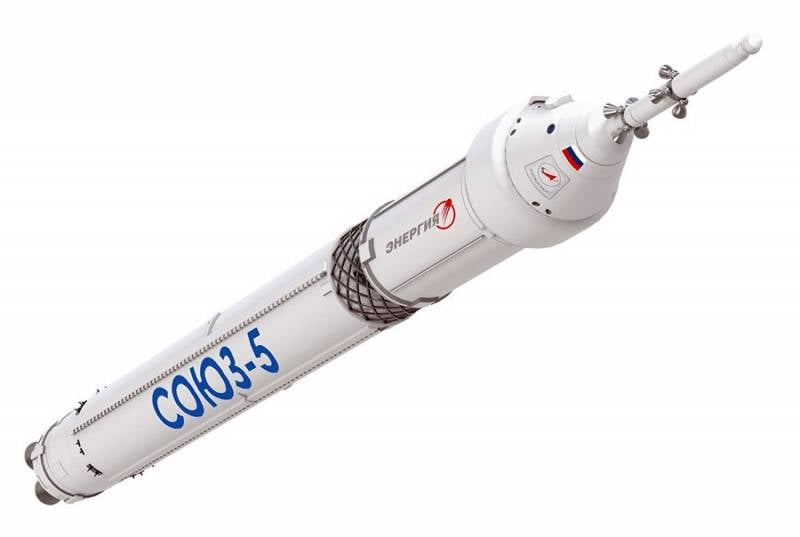
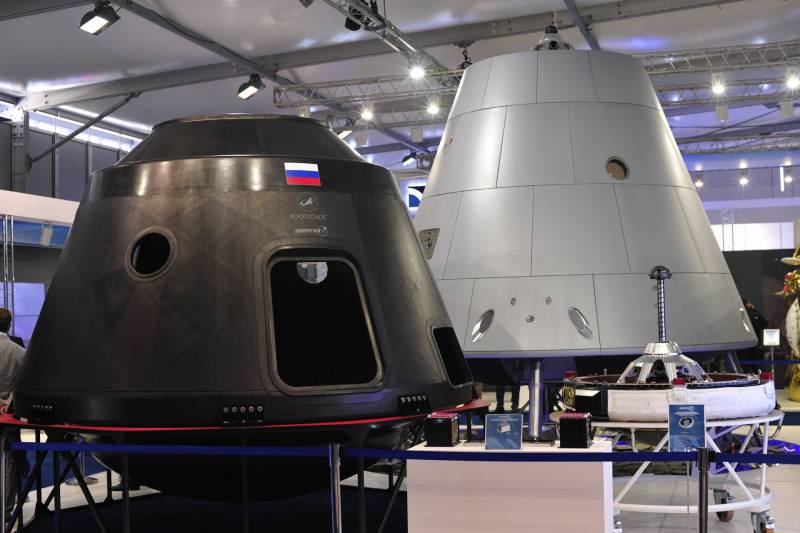
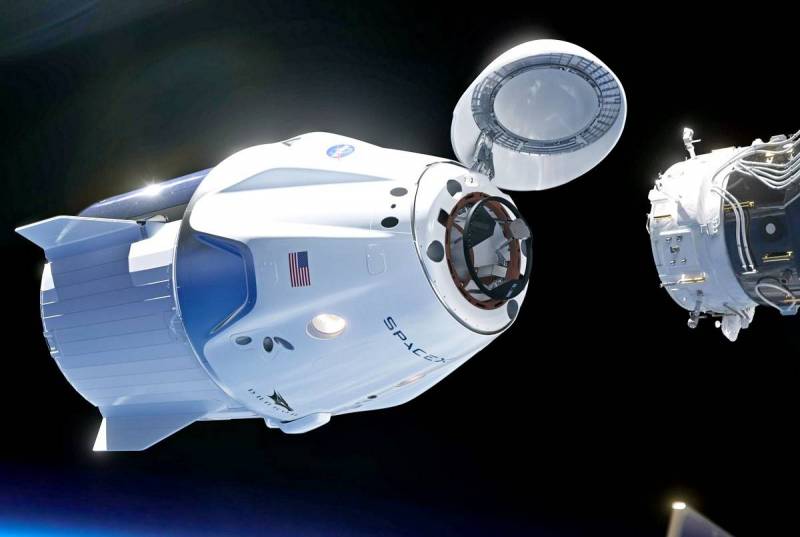
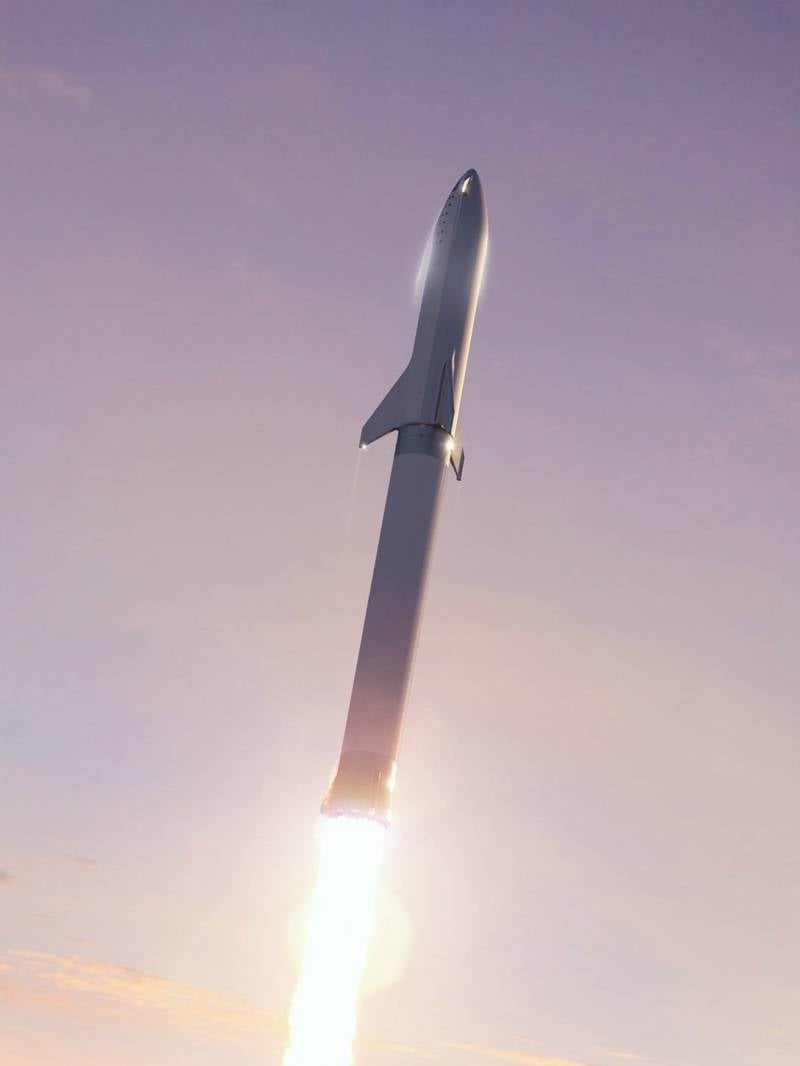
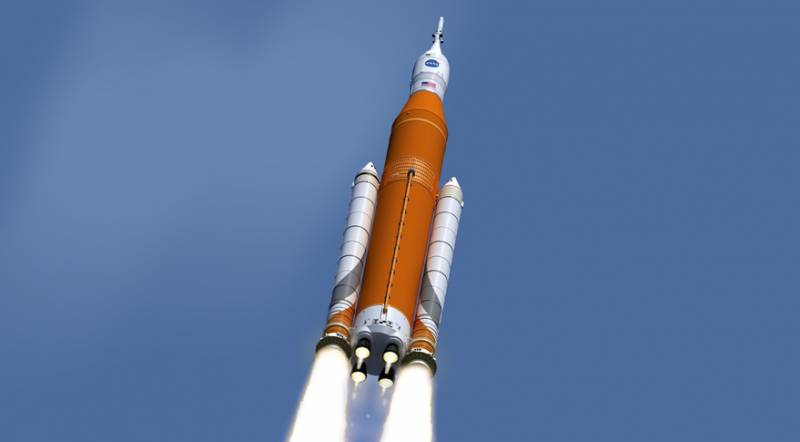

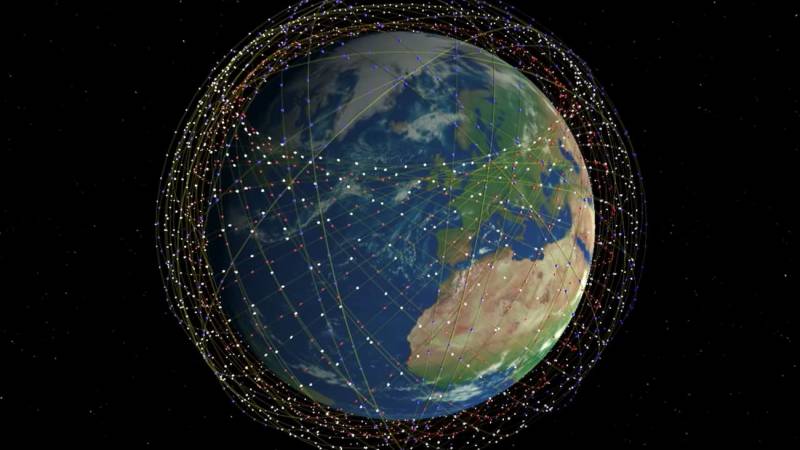
Information